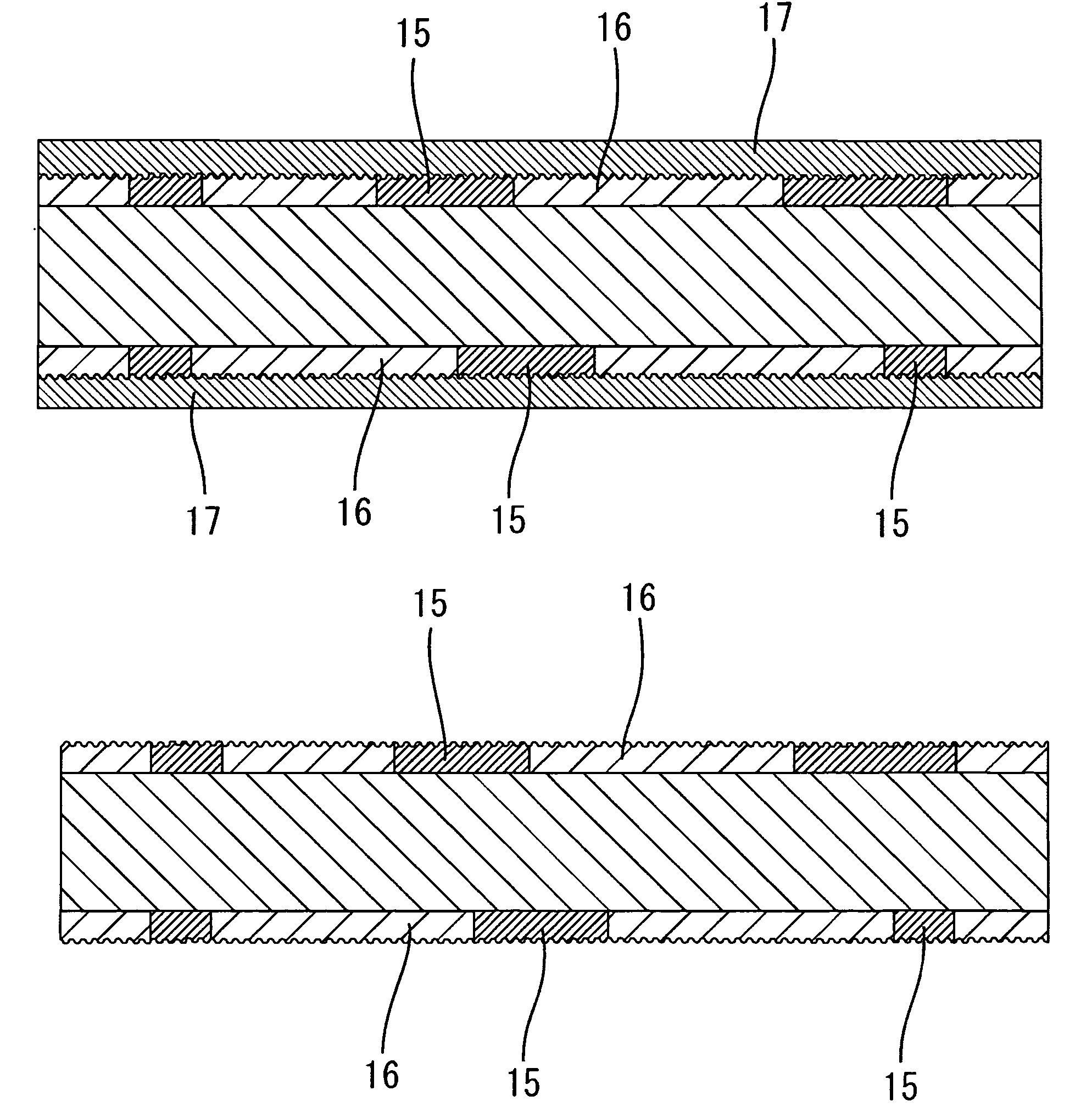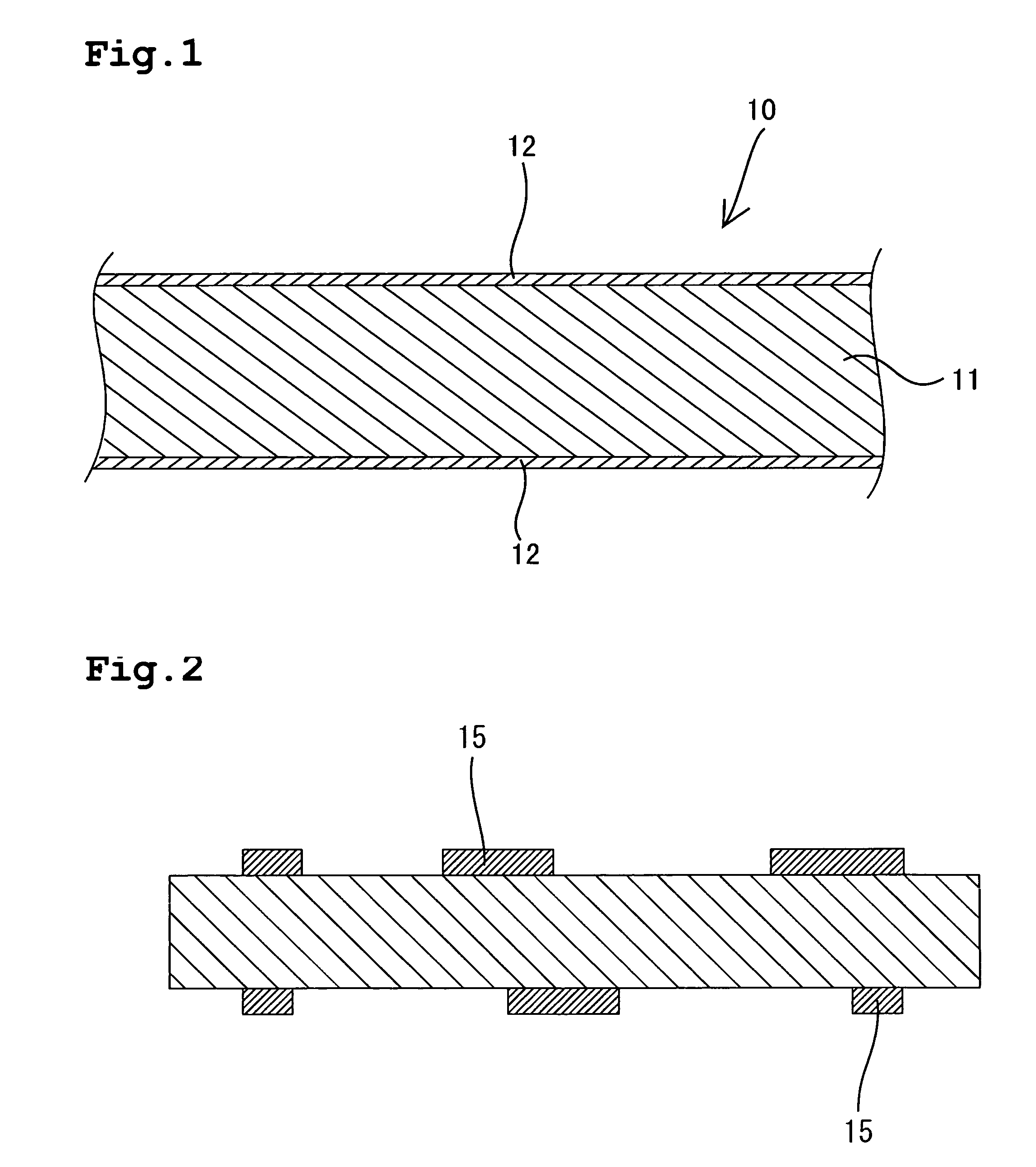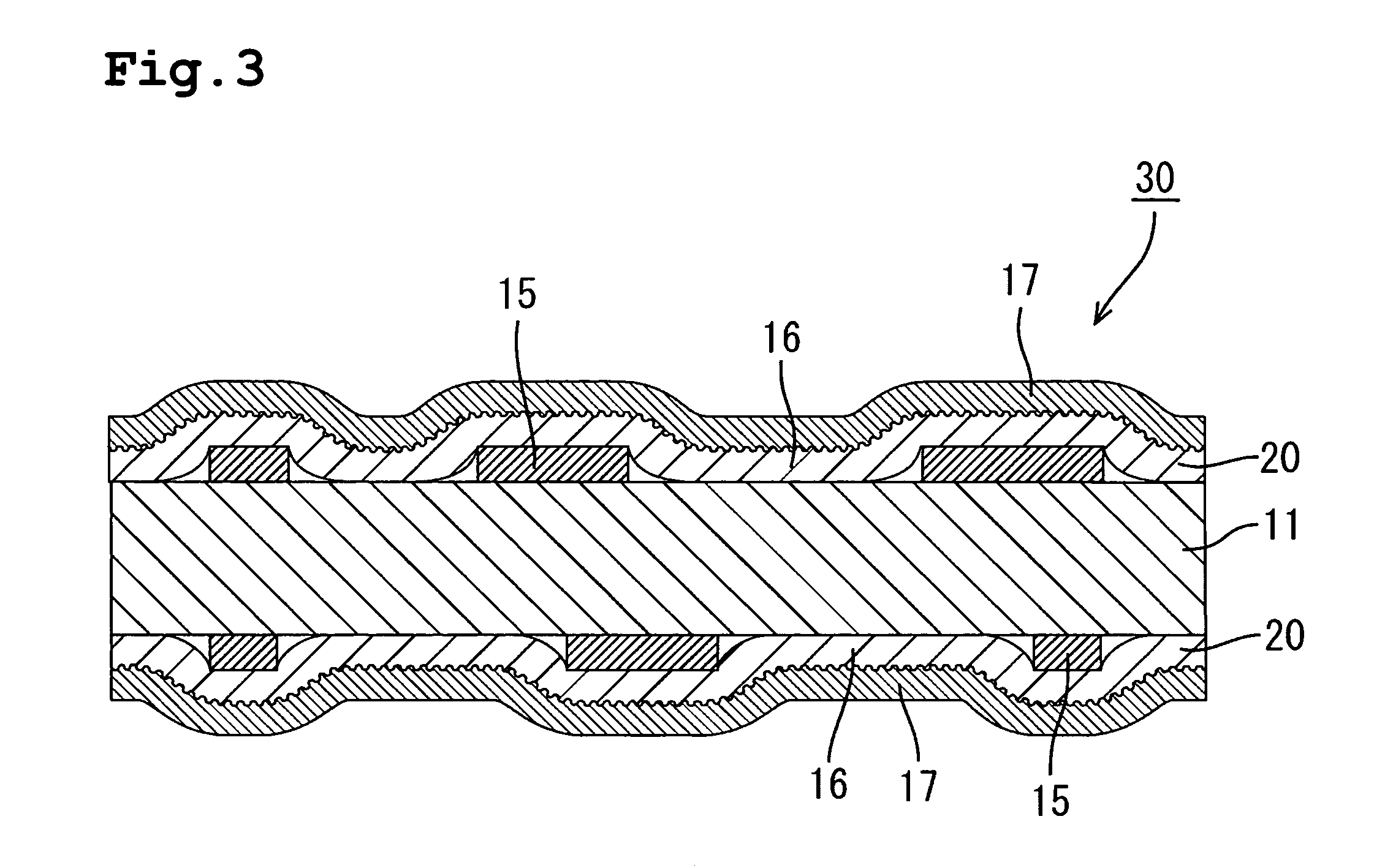Method for manufacturing printed wiring board
a printing method and wiring board technology, applied in the direction of resistive material coating, solid-state devices, non-metallic protective coating applications, etc., can solve the problems of difficult collectively pressing a plurality of sets of laminated bodies, difficult to reduce the number of laminated bodies that can be received by a pressing machine with a fixed width, and uneven configuration of printed wiring boards. , to achieve the effect of improving thermal circulation, reducing the number of smoothing plates, and increasing the number of lamina
- Summary
- Abstract
- Description
- Claims
- Application Information
AI Technical Summary
Benefits of technology
Problems solved by technology
Method used
Image
Examples
Embodiment Construction
[0019]In the present embodiment, as shown in FIG. 1, a copper clad laminated board 10 is used as a base material in which copper foils 12 are adhered to both sides of a glass epoxy substrate 11 with a thickness of 100 μm to 3000 μm. Circuit patterns 15 are formed on the copper clad laminated board 10 by a known photoetching method (see FIG. 2).
[0020]Next, as shown in FIG. 3, resin layers 16 are formed on the substrate by laminating resin sheets 20 with a thickness of about 30 μm, which are formed by e.g. semi-cured thermosetting epoxy resin, onto the circuit patterns 15 of the wiring board. On the resin sheets 20, nickel foils 17, having a thickness of 18 μm and one face of which is roughened by a needle shaped plating, are also laminated beforehand such that the roughened surface faces the resin sheet 20. At this time, minute air bubbles may also be contained in the resin layer 16. Additionally, the surface of the resin layers 16 is in a gradually rising / falling (i.e., undulating) ...
PUM
| Property | Measurement | Unit |
|---|---|---|
| thickness | aaaaa | aaaaa |
| thickness | aaaaa | aaaaa |
| thickness | aaaaa | aaaaa |
Abstract
Description
Claims
Application Information
 Login to View More
Login to View More - R&D
- Intellectual Property
- Life Sciences
- Materials
- Tech Scout
- Unparalleled Data Quality
- Higher Quality Content
- 60% Fewer Hallucinations
Browse by: Latest US Patents, China's latest patents, Technical Efficacy Thesaurus, Application Domain, Technology Topic, Popular Technical Reports.
© 2025 PatSnap. All rights reserved.Legal|Privacy policy|Modern Slavery Act Transparency Statement|Sitemap|About US| Contact US: help@patsnap.com



